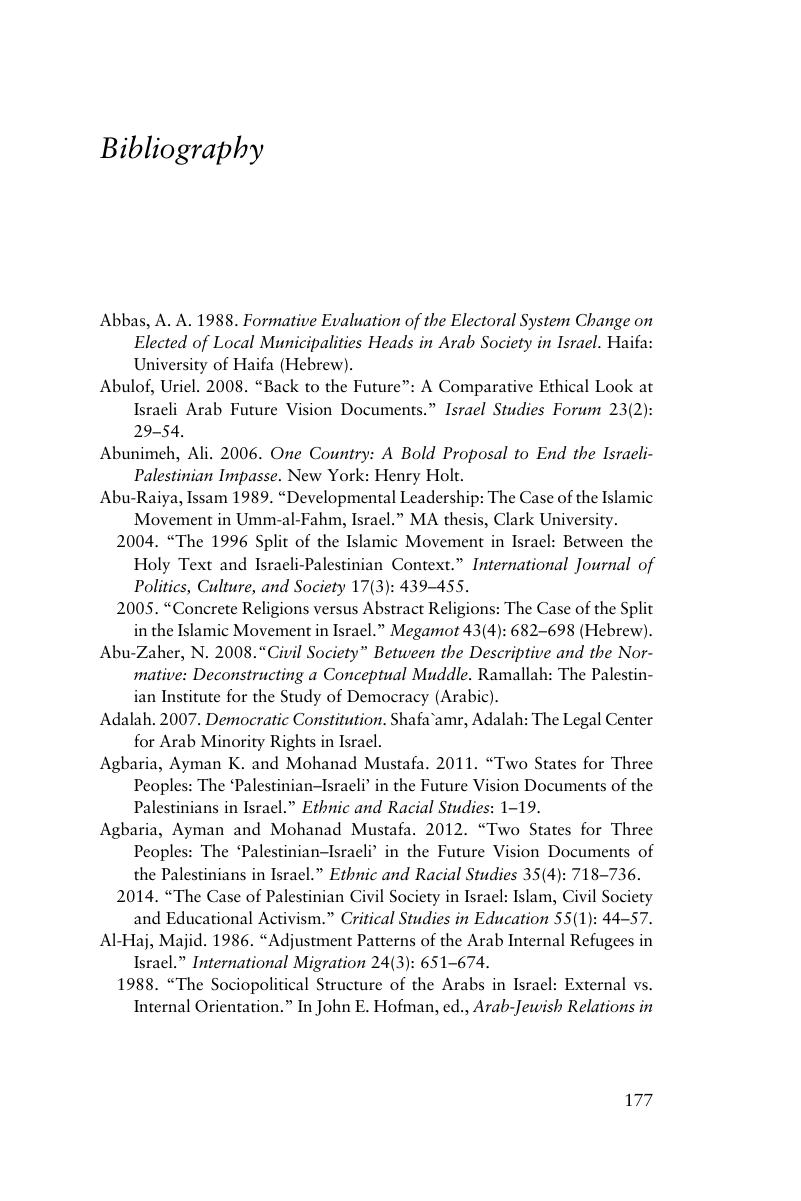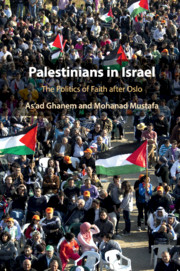Book contents
- Palestinians in Israel
- Palestinians in Israel
- Copyright page
- Contents
- Figures and Tables
- Introduction: Historical Background and Analytical Framework
- 1 The Political Aspirations and Demands of the Palestinian Minority in Israel after Oslo: Challenging the “Hegemonic Ethnocracy”
- 2 Political Leadership among the Palestinians in Israel
- 3 The Empowerment of Civil Society: Palestinian Non-Governmental Organizations in Israel
- 4 Politicization of Islamic Activism in Israel
- 5 The “Future Vision”: The Consolidation of Collective Identity Politics
- 6 The “Joint List” of Arab Parties in the 2015 Knesset Elections: The National Consensus from Concept to Practice
- Conclusion
- Bibliography
- Index
- References
Bibliography
Published online by Cambridge University Press: 12 October 2018
- Palestinians in Israel
- Palestinians in Israel
- Copyright page
- Contents
- Figures and Tables
- Introduction: Historical Background and Analytical Framework
- 1 The Political Aspirations and Demands of the Palestinian Minority in Israel after Oslo: Challenging the “Hegemonic Ethnocracy”
- 2 Political Leadership among the Palestinians in Israel
- 3 The Empowerment of Civil Society: Palestinian Non-Governmental Organizations in Israel
- 4 Politicization of Islamic Activism in Israel
- 5 The “Future Vision”: The Consolidation of Collective Identity Politics
- 6 The “Joint List” of Arab Parties in the 2015 Knesset Elections: The National Consensus from Concept to Practice
- Conclusion
- Bibliography
- Index
- References
Summary

- Type
- Chapter
- Information
- Palestinians in IsraelThe Politics of Faith after Oslo, pp. 177 - 192Publisher: Cambridge University PressPrint publication year: 2018



